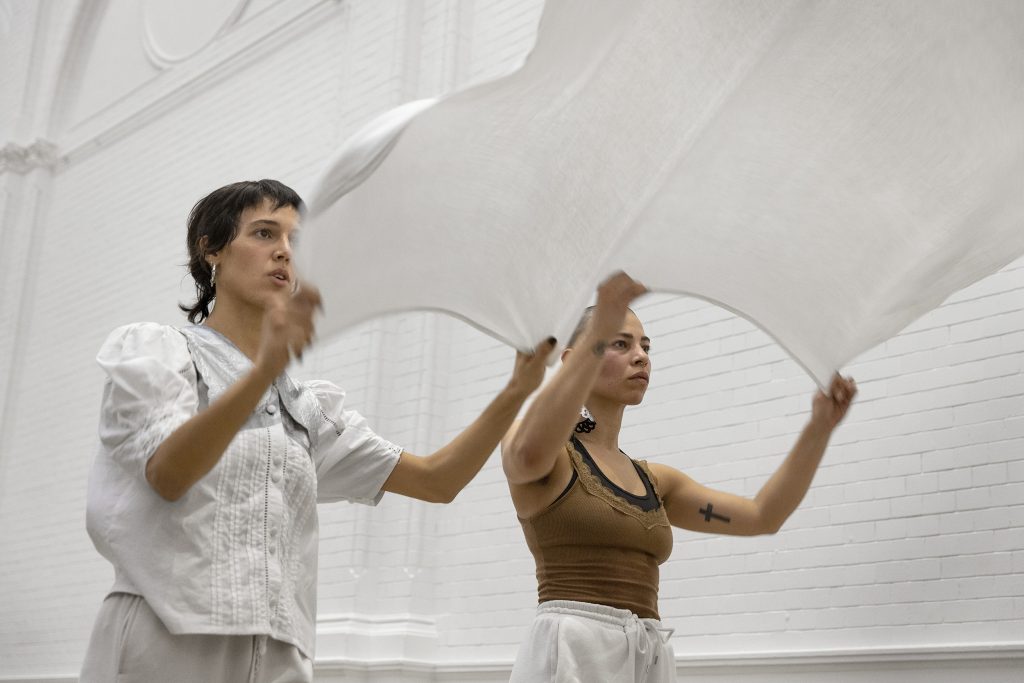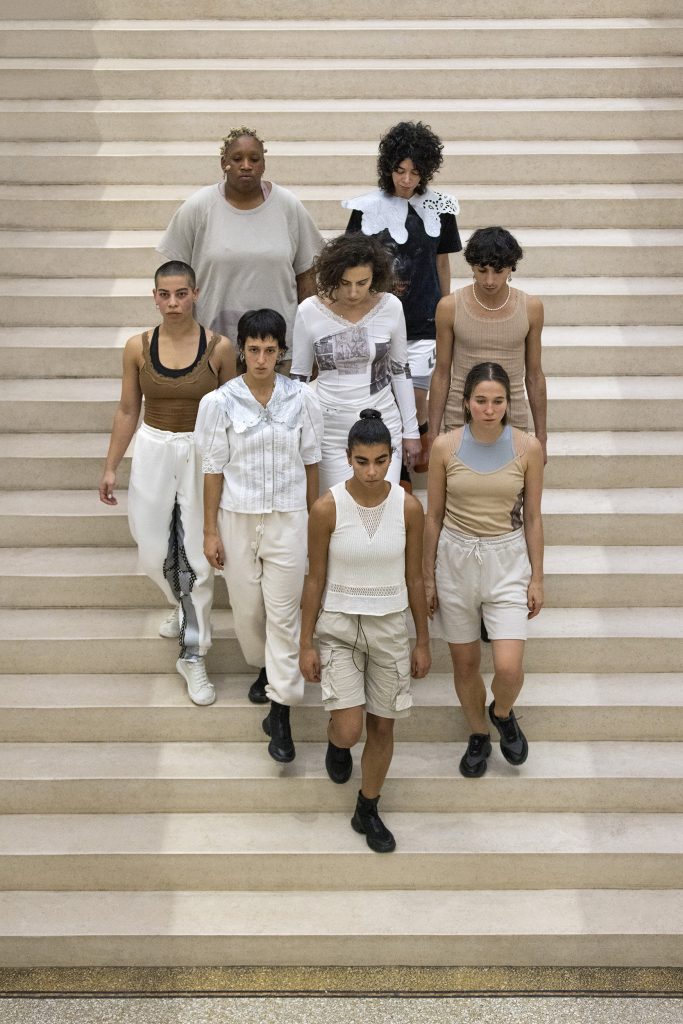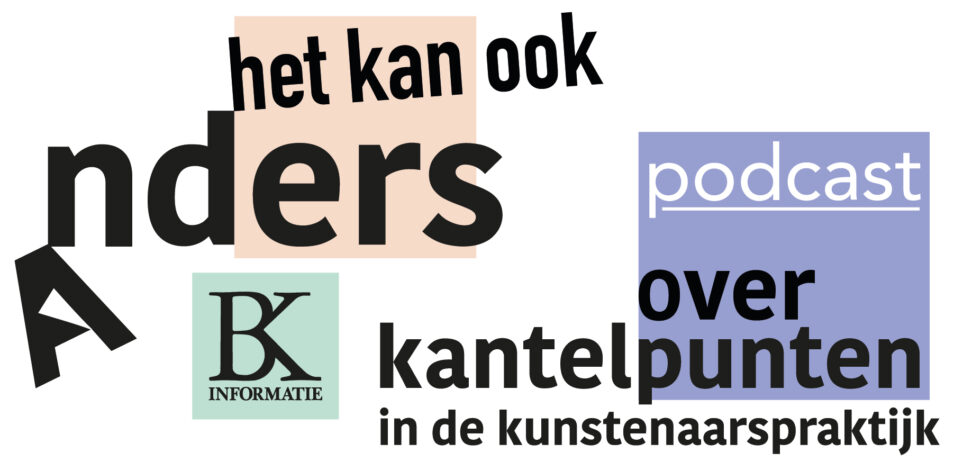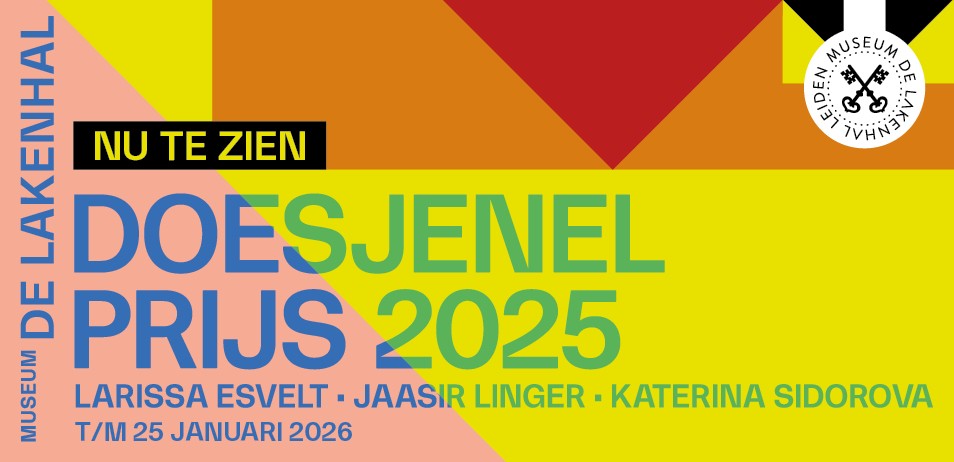Your body holds all the knowledge, all of the truth that you need. – An interview with Alexis Blake (EN)
Alexis Blake spoke with Alina Lupu about winning the Prix de Rome, creating space for healing, the ethics of making and claiming your worth as an artist. “It took me a lot of pain and struggle before I recognized how I was being exploited by this system, and that I needed to set my boundaries.”
Early January I get a message from one of the editors of Mister Motley:
“Hi, Alina,
I hope you’re well! I’m reaching out to ask whether you’d be interested in interviewing the artist Alexis Blake for Mister Motley.”
Blake had recently won the Prix de Rome, the highest distinction one can receive on the Dutch art scene, which she got in November of last year. She won the award for her performance “rock to jolt [ ] stagger to ash”, alongside a cash prize of €40,000 and a working period within an artist in residency of her choice.
The email continued:
“We thought it would be great if you two could discuss her practice, specifically her very conscious policy when it comes to hiring collaborators, the ethics of making, the importance of collaboration in her work. Alexis talks a little bit about that in this Prix de Rome interview (shown below, red.).
Best,
M.”
I immediately agreed and got a follow-up which ended in:
“The fee will be the same you received before, I realize now I didn’t specify that in my previous email.”
Once that was settled I connected with Alexis with the care fitting for the times we live and work in. For this interview, we set up a preparatory phone meeting, followed by a more in-depth phone interview. We were both wary of pandemic complications when this happened, so we avoided an in-person meeting. There was also no rushed deadline, given that we started our conversation in lockdown, which gave us a chance to dive deeper into her practice.
Alina Lupu
So, Alexis, what motivated you to apply for the Prix de Rome prize?
Alexis Blake
Prizes are a strange paradigm. They are entirely subjective and constitute the notion of a “winner”, which I don’t believe in within the arts. With that being said, these paradigms exist because as artists we are looking for different opportunities and platforms to create and show our work. The reason why I applied was because of an urgency I felt to address the issues that are highlighted in this work, the opportunity of gaining a wider platform to give exposure to this message, and of course the financial support to create the work.
At the time I came out of a longer period of self-reflection, which started shortly before the COVID-19 pandemic. I needed to step back and reflect on what I wanted for myself because I was completely exhausted and frustrated by the “art world”. I was working with performance within the visual arts sector and in many cases, I didn’t get enough support in the past; so I started to look into different modes of sustainability, both energetically and economically.
Tell me also a bit more about what came before the Prix de Rome application. How many years were you working in the field before ending up reconsidering your process and looking for sustainability within it?
Well, it’s not like it has been one moment in terms of thinking about the sustainability of my practice – it’s an accumulation of experiences, hardships, discoveries that are the sum of where I am now. During and after every work I am constantly thinking about how I can improve the process and conditions. It has been through the years that I have developed my own tools. I go through these periods of stepping back, reflecting and resting to ground myself and recalibrate.
After graduating with my master’s in 2007, I had to find a way to stay in The Netherlands, being from the United States. Once I finally obtained my residence permit, I went through a process of deinstitutionalizing myself. I wasn’t satisfied with my practice – I felt disconnected and that the work was too weighted on the analytical and theoretical. It was not me. I found the art environment I was in to be limiting, so I took approximately two years away where I focused solely on my body practice. I continued studying in-depth movement courses, and received my yoga and pilates teaching certificates. In doing this in depth reflection and investigation I was able to reconnect to my art practice from a more authentic place. Moving back into making work happened organically. Things were finally starting to connect – I was bringing together my different disciplines – dance, theater and visual art – in a harmonious and effortless way. I found my voice, my language. In 2012 I started to develop Allegory of the Painted Woman from this space. I was grounded, moving from my center.
I think it’s very important to have space to get lost, to doubt, to return to the body. Your body holds all the knowledge, your body holds all of the truth that you need. It takes a lot of emotional labor to process what happens externally and internally. If you just listen to the external, you move away from your body, away from the essence of yourself.
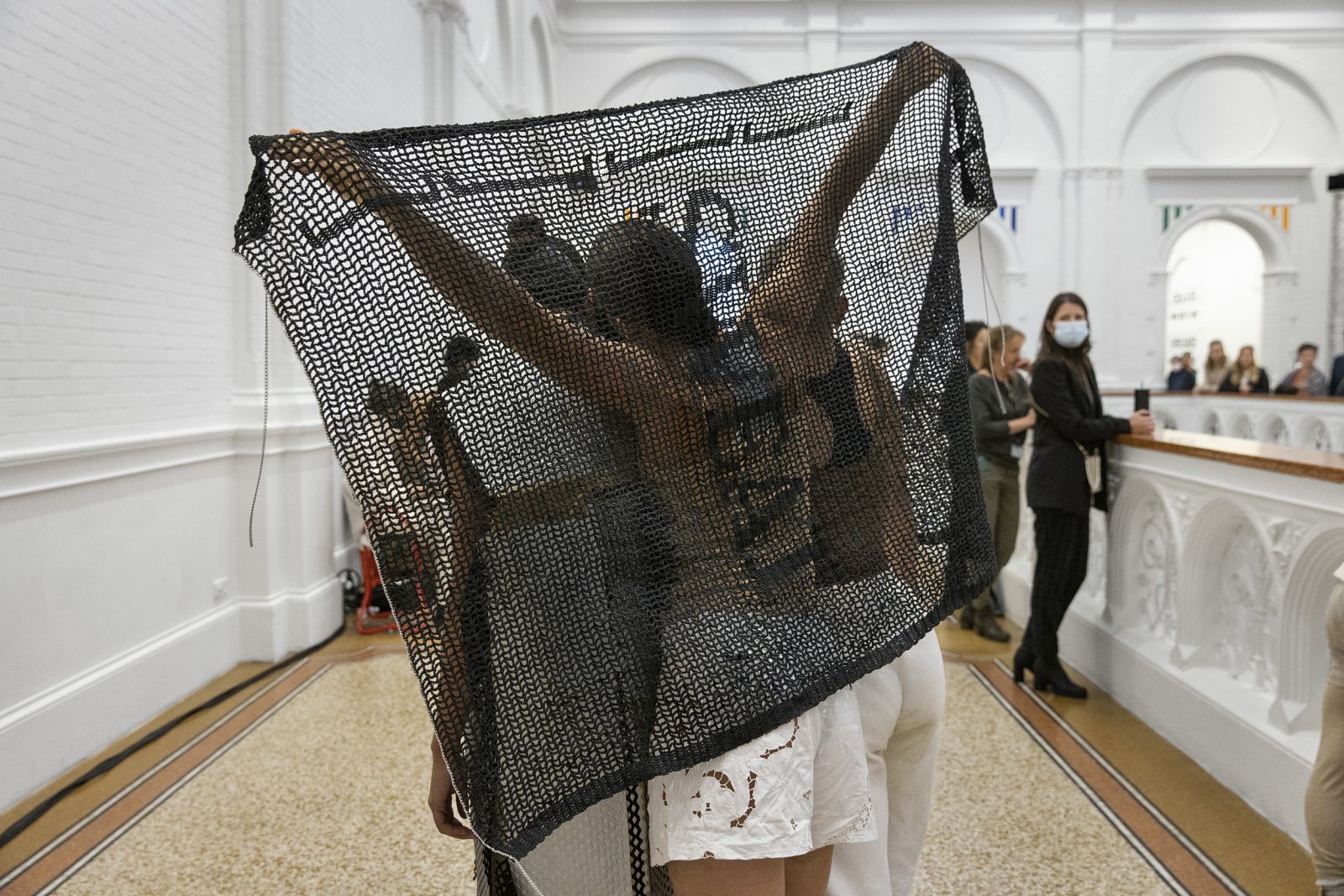
Did you ever think that if you don’t get the chance to do things on time you might miss certain opportunities along the way? I ask this also because there’s an interesting division being made when applying for the Prix de Rome – the application procedure is capped at 40 years old. And you are now 40.
I surpassed that way of thinking a while ago. My identity as an artist is not determined by these things. You could argue it’s naive to say that it doesn’t since the system works in this hierarchical way, but at the same time if I go into that way of thinking I’m enabling the system. We have to break these ways of thinking. I do see in younger generations that there is a move away from that limited train of thought. We need to have more conversations about these systems of value and categorizations, and to speak about them openly.
Limitations around age are asinine because everybody has their own process and what age constitutes in this context is an arbitrary factor. Life is not a linear process. Everybody comes to things in their own time, given circumstances, given culture, given privilege, given geography. There shouldn’t be pressure to start commodifying a practice. And one needs to be aware to not fall into the neoliberal and capitalistic trap of needing to produce, produce, produce in order to validate oneself as an artist. That requires a lot of labor and grounding to find balance inside the self.
You mentioned in a previous interview there was an urgency that transcended yourself when you pitched this performance for the Prix de Rome exhibition. What was this urgency?
During the pandemic, I went through different phases of being frustrated with how governments and society were gaslighting loss. The pandemic highlighted and exacerbated the preexisting issues around racism, misogyny, ableism, homophobia, transphobia, xenophobia. Everything became more pronounced during this period, as well as the response around this. With the spotlight on, these oppressive mechanisms of silencing being implemented both in action and response, were clearly visible. There was/is no space to collectively process emotions and trauma, so I could feel the tension of suppression.
“rock to jolt [ ] stagger to ash” highlights the western historical oppression and its mechanisms. The work also takes the space to acknowledge and heal. This process of accountability and healing needs to be a collective process. I am frustrated and saddened by how individualistic is the society I live in. The way the COVID 19 pandemic has been handled in the NL where the importance is placed on the individual, is detrimental to the building of an empathetic community. I felt an urgency to speak towards this and to give space to bring out what has been suppressed for way too long.
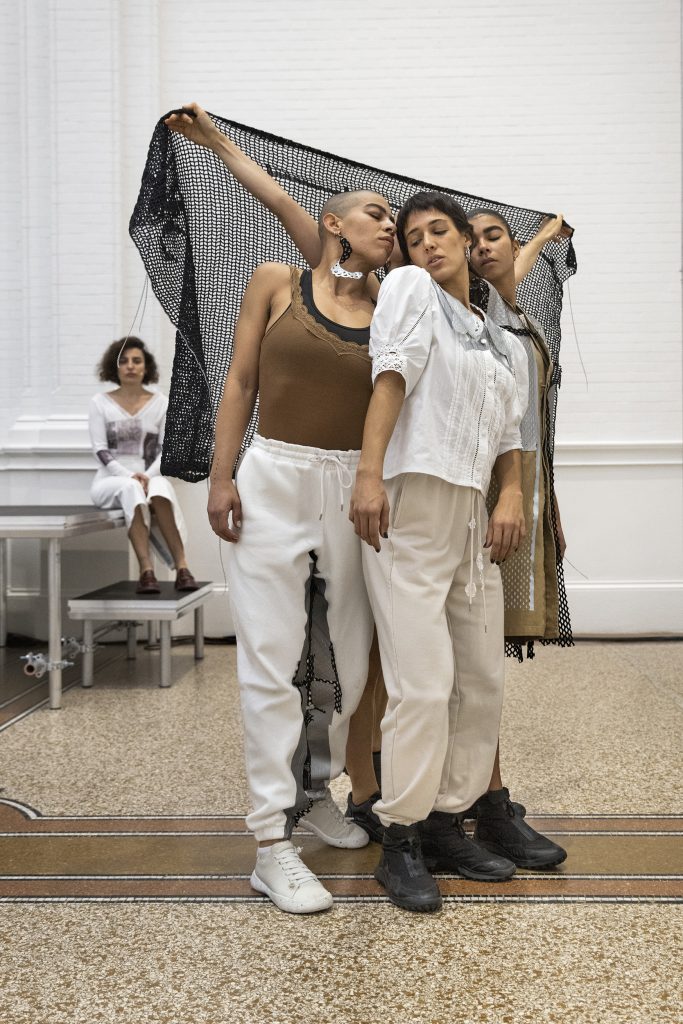
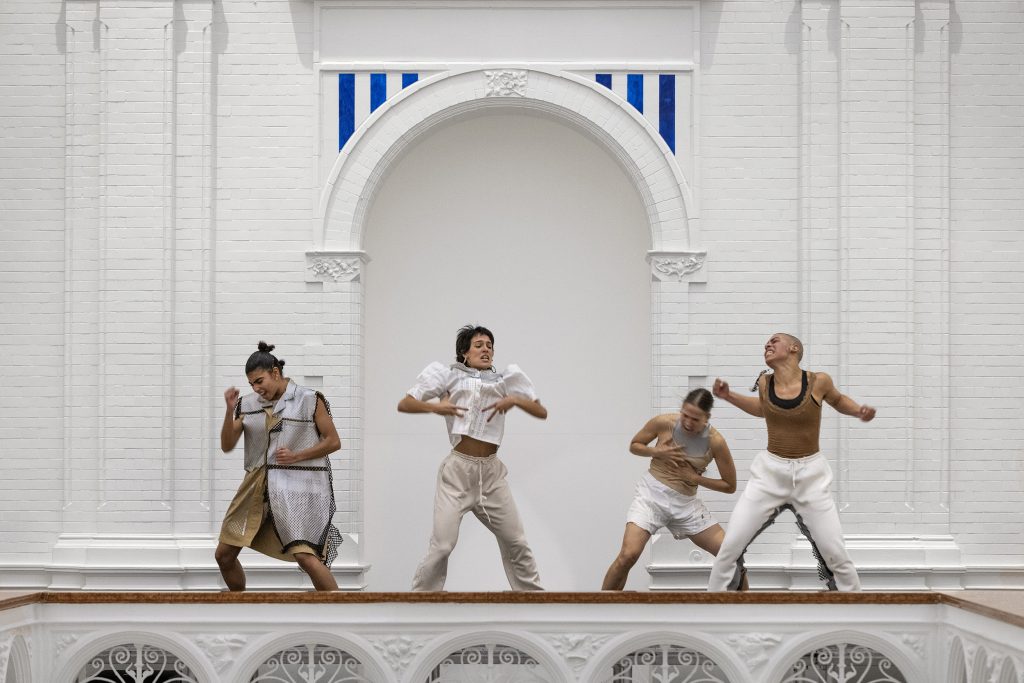
You focus on working collectively, can you elaborate on this? (For the Prix de Rome exhibition Alexis insisted on building up a team comprised of only women and non-binary people, as garment designers – Elisa van Joolen with Mika Perlmutter , graphic designers – Sandra Kassenaar and Dongyoung Lee -, a smell researcher and artist- Sissel Tolaas -, dancers – Shari Ashley Labadie, Alice de Maio, Polina Mirovskaya, Gianine Strang -, singers and sound artist – Sanem Kalfa, Logan Muamba Ndaou, Ghaith Qoutainy -, a sound engineer – Hala Namer -, an text editor – Harriet Foyster -, a producer – Helena Julian -, a somatic therapist – Amanda Macrae. And she was assigned a curator: Britte Sloothaak, from the Stedelijk Museum.)
Shortly after being nominated I immediately knew that I wanted to work with Elisa, Sandra, Dongyoung and Sissel. After a few months of intense and concentrated research at WIELS and in Athens, I began the process of sharing my working archive that I assembled with my collaborators: Elisa van Joolen, who designed the garments with Mika Perlmutter, Sandra Kassenaar and Dongyoung Lee, who designed the publication and Sissel Tolaas, who created the smell in the performance and exhibition space.
Elisa, Sandra, Dongyoung and Sissel are good friends of mine so the process of working together was filled with a lot of care, love and support. I have long-term working relationships with Elisa, Sandra and Dongyoung. We understand each other and our work on a spiritual level. This was the first time that Sandra and Dongyoung worked together. I had worked with them both separately for years and I had an intuition that they would be a powerful duo for this project.
With others, like Sissel, I always wanted to work with her and we had been talking about collaborating together for years. Both of us are misfits, challenging systems so we understand each other’s frequencies. I’ve learned a lot about the psychology of smell from her and how to implement that into the work. I went to her lab in Berlin and worked on creating the smell of decay. You can read decay as a smell that is in process and gives way to something new, to new development.
These collaborations were effortless, they inspired me and opened me to new perspectives and insights while creating.
In September 2021 I started to cast my team of performers. For the dancers, I was looking for certain qualities that they could embody and distinct movement languages that could work well together. I was looking for contrast and different somatic ways of lamenting since lamenting releases and expresses that which is deep inside you. In selecting the singers – I wanted a contrast in sound, style and experience. And for the sound artist I was looking for someone that could work collectively, was open to improvisation and had a strong sensibility of sound’s movement in space. I wanted them to sample the voices live and create a composition using the space.
After the intimate processes of working separately with the dancers and singers and sound artist, the focus was on allowing space for authentic movement and sound, free expression and ultimately decolonizing the body and the voice.
What principles of working together are important for you?
When it comes to working together, I believe you have to build a space of trust – especially when dealing with such sensitive subject matter. You have to detail and inform what the process is going to be, request people be aware of what their boundaries are and give ample amount of time for discussion and reflection. At the beginning and end of each day you always check-in to make sure everyone is okay. It’s a matter of constant processing. To help build trust, I brought in a somatic therapist that I have been working with for years to do a session with me and all the performers.
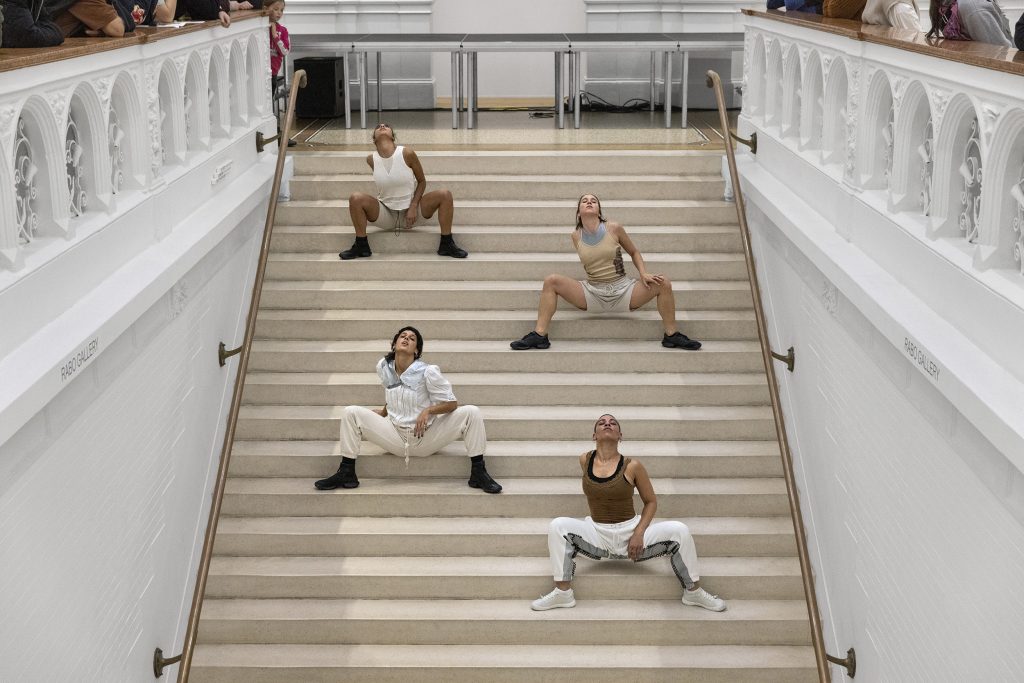
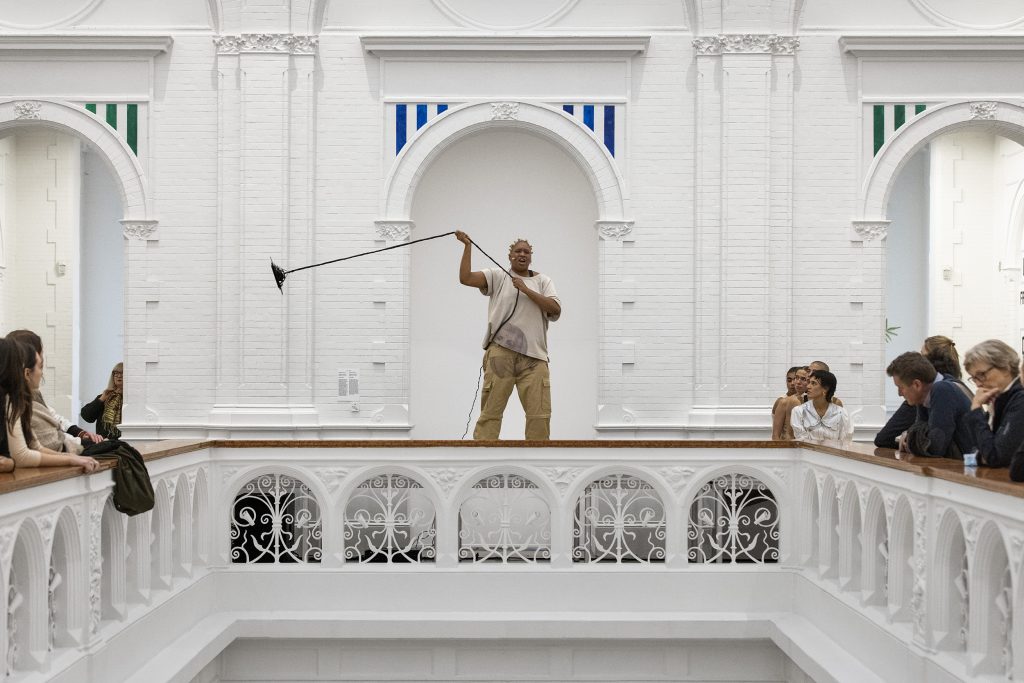
You also worked with institutions when making this piece. Which institutions did you work with? How long was the process for developing ” rock to jolt [ ] stagger to ash”? And how did it go?
I worked with the Mondriaan Fonds and Stedelijk Museum Amsterdam. I also had to apply for external funding from the Outset Contemporary Art Fund. Stedelijk couldn’t apply for additional money for my project because that wouldn’t be fair to the other artists. The Mondriaan Fonds assigned the production budget so that all of the nominees had an equal amount of money going into the process. They also gave the Stedelijk a budget to produce all the works in the museum.
For me, the assigned production budget wasn’t enough since I work in a time-based media where I am paying labor wages and I want to pay my team fairly. This then led me to more work by applying for more funding at Outset.
The research and production process started in May and lasted until October 2021 (six months in total), which for me is extremely short. We had to already tell the Stedelijk in June what we would show in the exhibition space. Stedelijk has a certain way of producing exhibitions since it is a larger institution with different departments and teams that have protocols and a number of other projects that they are working on simultaneously. This structure wasn’t conducive to a relatively short-term process-based practice/work that was unfolding as the months and weeks progressed. That’s not a criticism, it’s just the manner in how the institute functions with producing work.
All of us nominees were making new bodies of work. Having to already specify what I was going to do in the space while still deeply immersed in the research phase, felt counter intuitive to my creative process. I can only speak for myself, but it felt like the chicken before the egg, and that was challenging for me since I don’t work that way. This scenario of structurally working differently required solutions; so we – the institution and myself – had many conversations to make it work for both parties. These conversations are very necessary in the working relationship so roles and timelines are clear. In September I had to hire a producer, Helena Julian, because in order for me to have the head space, time and energy to create the work, I needed assistance managing and communicating with all the different departments of the Stedelijk, Mondriaan and my team of collaborators and performers. Having the support of a producer helped me tremendously in being able to realize the work.
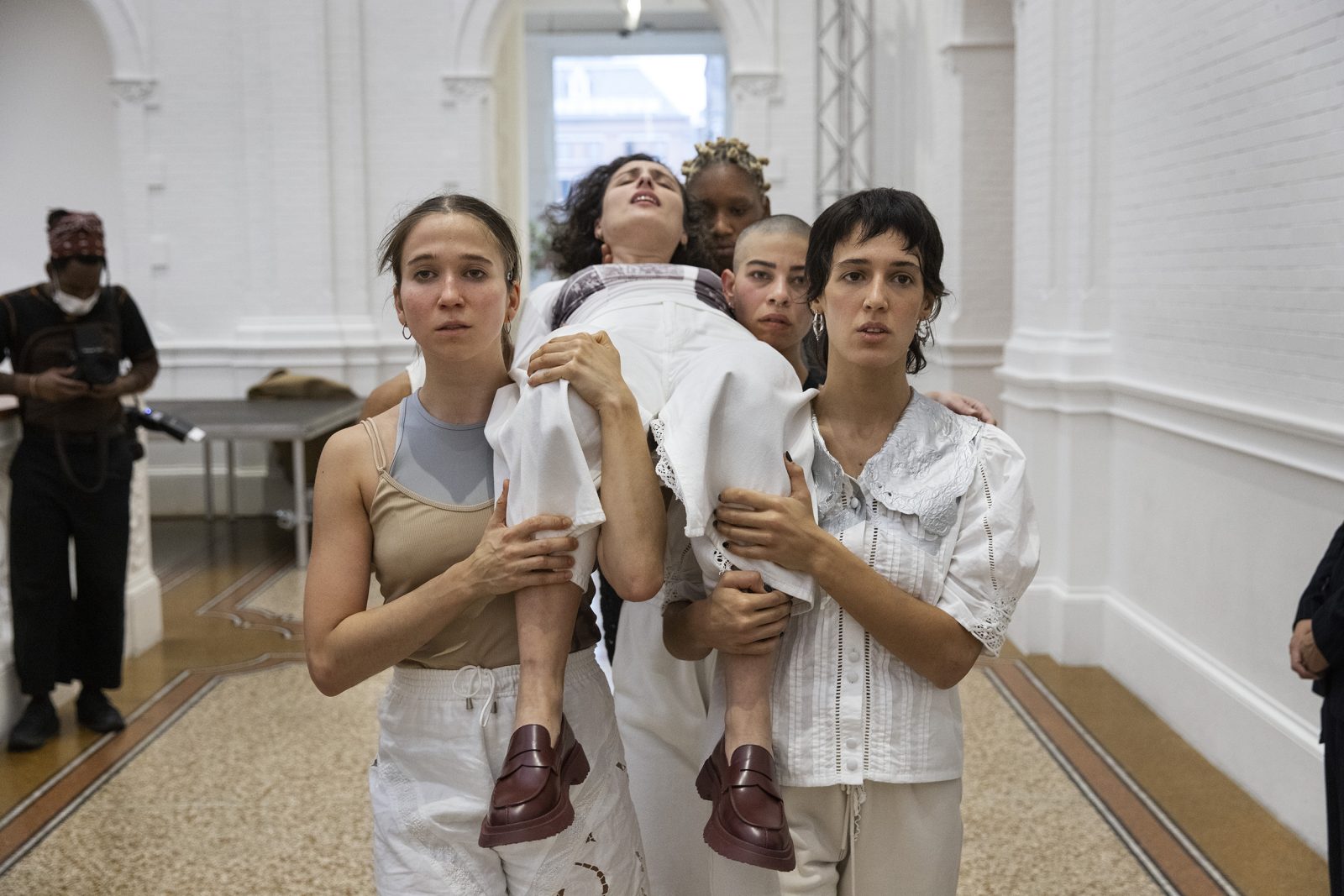
In that line of thinking, there seems to be a move in the visual arts towards presenting performance work in museums. Are there similarities in the ethics of making between the performing arts and the visual arts? What could the visual arts learn work-wise from the performing arts field?
Visual arts institutions could learn a lot about the economy, production and ethics of the performing arts field. For a few years now I have seen the trend of visual art spaces programming performance, but without the infrastructure to properly produce. There are visual art institutions that don’t have any knowledge of performance art, yet want to program performance without putting in the work to properly produce a performance and pay fair wages. And then there are the institutions that intentionally exploit artists working with performance. I’ve experienced both of these cases, and also positive experiences where everything I needed for the process was acknowledged and delivered. Processes where the curator fought for fair wages for all artists and respected artist labor and time.
In this respect, I find contracts fascinating. They reveal an institution’s ethics. For example, most institutions do not cover the insurance of performers. Objects in a space will be covered by insurance, but working bodies within the institution are not covered. Most of the time it’s your risk, your liability. My question is whose responsibility is it? Why is it that the artist takes on all the liability when they are the ones without a salary or safety net to support them when they fall?
At the end of the day, it seems that artists working with performance tend to go through a long process of educating visual art institutions. I always vocalize my perspective and feedback. But it’s a bit of a Catch 22. When I give this knowledge that I have acquired through my struggles, I’m offering even more free labor as an artist. But if I do not give it, I enable a broken system and no change can occur for the next artist working in that space.
Most of the time it is not the direct people that you are working with, but the structure of the institution that is the problem. Even if those working in a position right next to you have good intentions and fight with you for fair treatment, the system they operate within isolates us as individuals. It’s then hard to make a change as a lone agent. That’s how power structures work – they are designed to separate and isolate so that collectivity and solidarity can not occur, and if you do not comply they threaten to give the opportunity to the next person in a never-ending line. This system wants you to feel disposable. It’s this mentality of scarcity that breeds competition and exploitation.
Were you educated as an artist to claim your rights and fair working conditions?
These conversations did not exist when I was studying. The idea was that you have to hustle. As an artist you are so used to doing a thousand jobs and roles to make your work. It’s what we learn in how to survive as an artist. Most artists don’t know how to ask for better conditions when they get into these exploitative situations. The system relies on you not to ask these questions, and the artist doesn’t know how to raise the right questions. It’s mind-boggling to me that this hasn’t been addressed within education in my time, and most likely it’s rarely addressed now. It took me a lot of pain and struggle before I recognized how I was being exploited by this system, and that I needed to set my boundaries.
I have found that most of the time when you claim your space within the institution things can be arranged for you. But you have to put yourself out there, you have to claim your worth and know your boundaries, which at the beginning is hard work, but it gets easier the more you do it. It’s not about making demands, but about communicating what you need and setting up a space to have nonviolent and solution-based communication. If someone is not willing to do this with you, they are providing you with a map of how things will progress and what it is that they value.
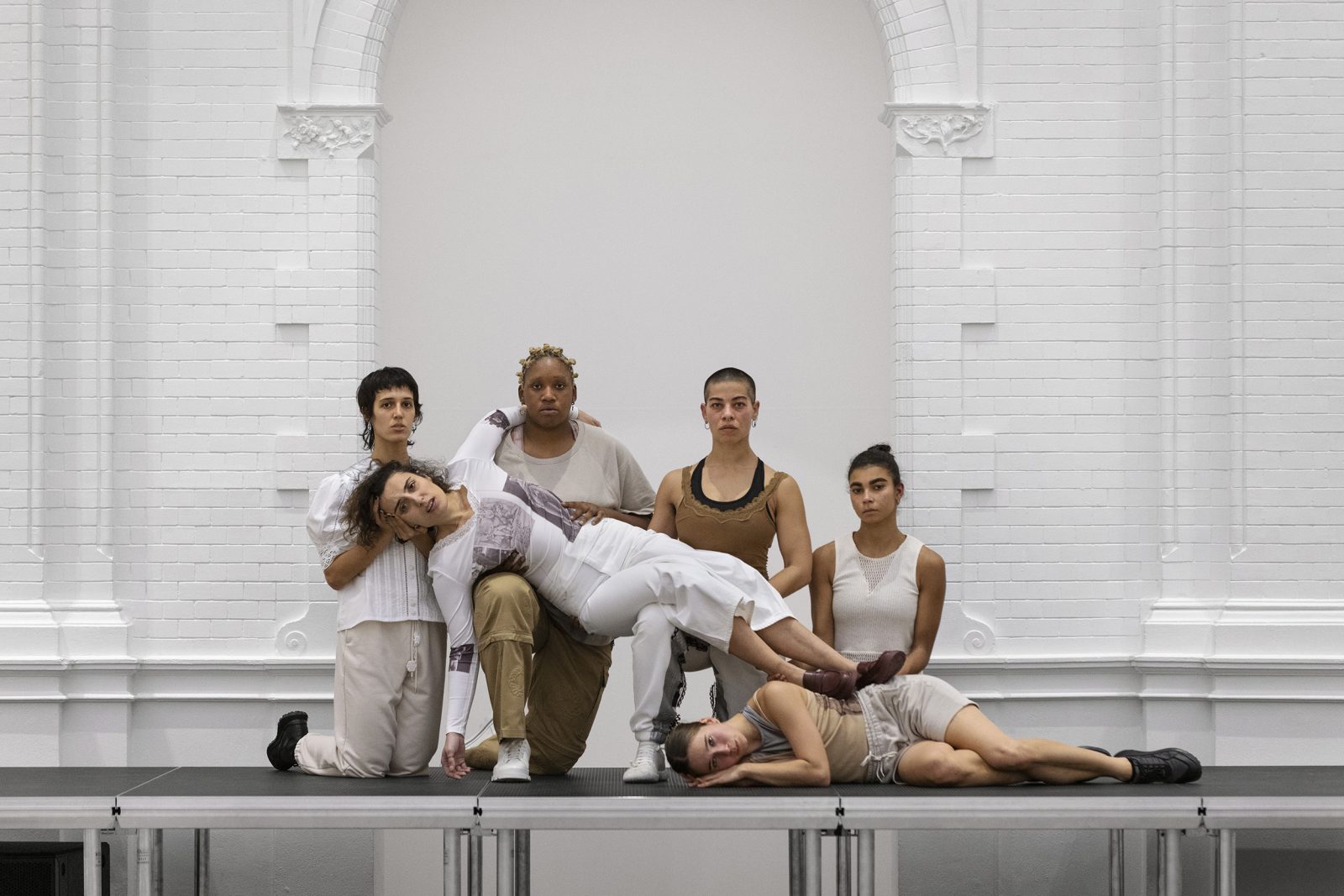
When you work with an institution do you step in thinking long term about your working relationships?
It really depends on the institution and the context I am being invited within. Of course I would love to build long-term working relationships for the future. I try to build relationships with individuals within the institution – the curator, programmer, security guards, technicians, etc. I do have this in terms of residencies I was a part of – Jan van Eyck and WIELS – but these are of course different dynamics. I think long-term working relationships with institutions over the span of years is a very rare and special thing if it happens. I also think it depends on how an institute curates and programs – if they are interested in such relationships. Also a lot of the time the people you worked with don’t always stay at that institution, so that makes it difficult to continue the relationship with the institution.
In closing, I’d love to ask you, what’s next?
Recuperating and resting and processing the outcomes. My working process requires a lot of emotional labor. I need to come from a grounded place to know where I need to move towards. “rock to jolt [ ] stagger to ash”, is just the beginning. There is much of this project that I still want to explore and develop. The six-month working period that I had to make is a very short timeframe, even if I did a lot in six months – I ultimately produced three works in these six months – the performance, the publication, and the exhibition space experience!
And all the negotiation, all the processing, applying for funding …
All the labor… A lot in six months. As I mentioned earlier, this work is just the beginning. I would like to return to the place that inspired me in developing the work – Athens – and go deeper with the historical research and points of focus from the performance. I’ve also been invited to do this work in other places, so in some cases I will do new iterations with a whole new team of performers. Where the work is shown and who participates and performs will add different textures, histories, narratives and meanings.
I believe you need rest to have insight and clarity. As a choreographer, director and maker I have to hold space for everybody. I have to be very grounded to hold this space. If my energy is depleted I cannot be there in the way I need to be. Therefore rest is necessary for future movement and connection – for me, my team, you and all who encounter the work.
In closing: Alexis’ work will be shown again later in the year, as a live performance within the Stedelijk Museum, and within the Holland Festival June 15th, 17th, 19th, 20th, 2022.
https://www.hollandfestival.nl/nl/rock-to-jolt-stagger-to-ash
